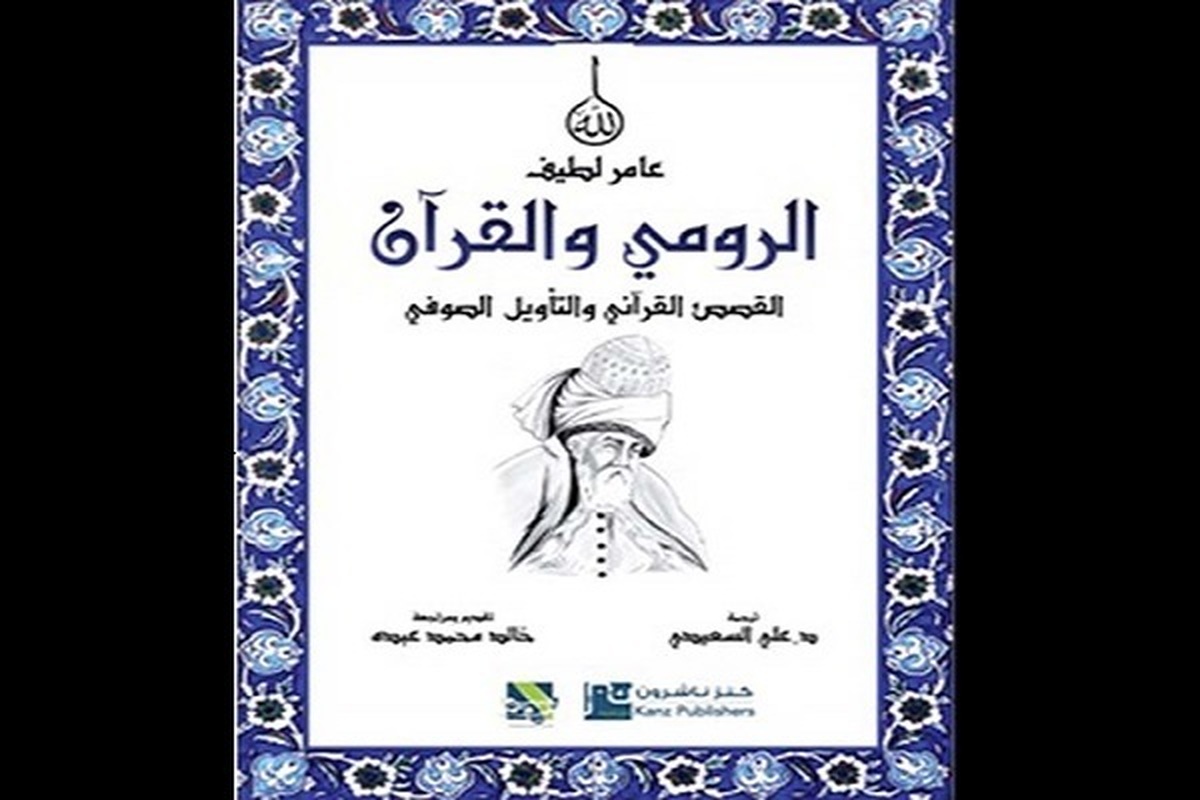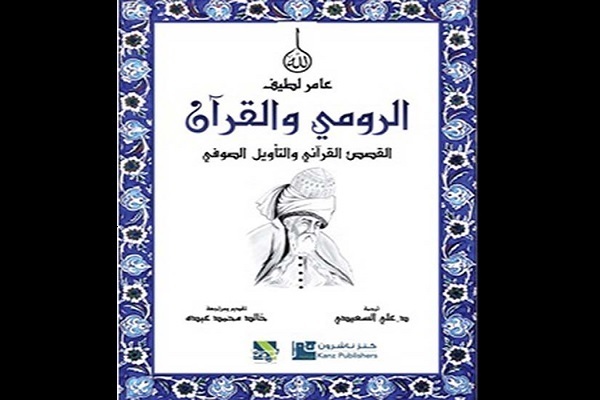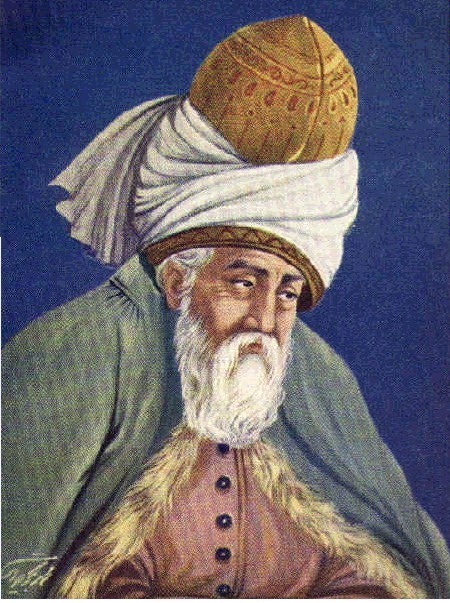A Pakistani Scholar’s Account of Rumi, Quran, and Sufi Interpretation


The Arabi 21 website has reviewed the book in a report, which is as follows:
Amer Latif, a Pakistani-American scholar and writer, begins this book with a surprising fact. He writes that Jalaluddin Rumi (also known as Maulana and Maulawi), a Muslim mystic who lived in the 13th century, is the most famous and beloved poet in America today. The translation of his works from Persian into other languages was carried out by orientalists who transferred his legacy to their own culture, and it is obvious that the difficulties of translation from one culture to another lead to ambiguity of the deep relationship between this mystic and the Quran.
In his introduction to the Arabic translation of this book, Latif adds: The Arabic translation of Rumi’s works was done in the last few years, so Rumi is not known to Arab readers very much.
Furthermore, Ali al-Saadi, the Iraqi translator of this book, adds: Most of those who repeat excerpts from the poet’s words hardly know true Sufism.
This book (Rumi and the Quran; Quranic Stories and Sufi Interpretation) was written to fill a gap that makes it clear that Rumi’s Sufism is a rich universal experience that transcends religions, ethnicities, and races, and that his interpretation of the Quran responds to the human need to interact with the Absolute. Hence, the book is aimed at a general audience, regardless of their religion or denomination, and attempts to prove that the concepts of love, beauty, and mercy in Rumi’s poetry stem from Quranic principles.
Interpretation of the Quran among Shias, Jurists, and Sufis
The author of the book explains the different tendencies in the interpretation of the Quran and introduces the various sciences related to the interpretation of the Quran, such as the science of recitations, rulings, abrogations, hadith, principles of religion, principles of jurisprudence, Arabic language and grammar, and reviews and encyclopedias of these sciences.
Read More:
He writes: Interpretation has conditions and etiquette. One of these conditions is sincerity, which aims to express the concepts of the Quran and free it from whims and desires. Among the etiquettes that must be observed is the need to be polite towards the Word of God Almighty and to search for correct words in interpreting the verses and not to pay attention to unscientific words.
Sufi interpretation of the Quran takes a different approach. Hence it is called allusive or Faizi interpretation. Sufis use the prophetic hadith that says, “The Quran has aspects, so convey it in the best way” to justify their reliance on allusions used to infer the esoteric meanings of texts. Some Sufis even believe that every appearance has 70 hidden meanings.
In general, Sufi interpretation is organized according to a hierarchy; from the interpretation based on expression, which is the interpretation of the common people, to the interpretation based on indication, which is the interpretation favored by the saints of God, and they reach its hidden essence behind the curtain of letters and words in the form of revelation; whose truth only the prophets can understand.
Creative Narration and Its Role in Interpreting the Quran
Among the Sufi commentators of the Quran are Ibn Ata' al-Adami, Abu Yazid al-Bastami, and Muhyiddin Ibn Arabi. Abu Hamid al-Ghazali is also one of the most moderate scholars or the closest commentator to Shia views. However, the most influential commentator on Jalal al-Din Rumi was his friend Shams Tabrizi.
Shams’s approach to Sufi interpretation is that one must go beyond the apparent meanings of the Quran and seek its esoteric concepts, because the Quran has an apparent meaning and an esoteric meaning. Therefore, this creative narrative is the approach to Sufi interpretation of the Quran.
Read More:
Rumi’s poems are partly exegetical, relying on this creative narrative. He narrates events from the story of Moses (AS) and Pharaoh, and uses a special method to present the characters of these two, as well as the characters of Pharaoh’s wife, Asia, and his magicians and minister, Haman, and finally arrives at beautiful concepts.
Rumi’s Commentaries on the Verses of the Quran
Jalaluddin Rumi did not present a specific view of interpretation or a distinctive method of understanding meaning. Therefore, the researcher of this work personally examined the texts to determine their characteristics. He ultimately concludes that this Sufi mystic used the duality of structure and meaning and believed that the form of an object is its external appearance, but its real meaning is its inner and invisible truth.

Rumi used the prayer of Prophet Muhammad (PBUH), which says: “O Allah, show us all things as they are” to show that the world as it appears to us on the surface is merely a veil over reality.
Rumi presents what he believes to be the correct model for interpreting and revealing the inner meanings of the Quran. He plays the role of a teacher within the framework of guidance.
Pharaoh in Quran
In this book, Amer Latif examines the description of Pharaoh in Rumi’s interpretation and examines the personality traits that are depicted for Pharaoh in many events, such as the birth of Moses, Moses’ conversation with God or Pharaoh, Pharaoh’s conversation with the magicians, the description of Pharaoh’s wife and his minister Haman, as well as his family and people, and considers the transformation or change that occurs in these attributes throughout this Quranic narrative.
One of the conclusions that Amer Latif has reached is that the Quranic image of Pharaoh in Jalaluddin Rumi’s creative narrative is primarily a psychological description. He focuses on his inner strengths and the motivations for his actions. This Quranic story shows a character who understands the truth of God’s mission, even to a certain extent, within himself.
Pharaoh allowed his own pride and ambition to obscure his awareness and, following his arrogance and pride, continued his cruel actions. However, an interesting development occurs in Pharaoh’s personality when, at the moment of drowning, he announced his precognition of the Oneness of God.
Read More:
Amer Latif reaches a profound conclusion: Jalaluddin Rumi’s exploration of the psychological state of Pharaoh’s character is related to the fact that he considers him a small being whose dynamics are reflected in the dynamics of the larger world. Accordingly, Pharaoh is nothing more than an example of the human soul and his weaknesses are due to the weaknesses of this soul, or perhaps he is more like a mirror in which Saliks (those treading the path to perfection) must see themselves.
Rumi’s Presentation of Stories
Rumi’s stories are not a free interpretation out of fantasy. Rumi presents events in the form of reality and facts on the ground, and based on the use of Quranic story, he gathers details and transforms himself into an expert narrator with extensive knowledge to lead the reader to accept what he says.
Amer Latif does not hide his amazement at Rumi’s creative interpretation and narration, and at the end of the book he concludes that Rumi’s interpretations of the character of Pharaoh in the Quran are largely creative, exciting, and extensive. This interpretation shows a state of connection with the Quranic content and, by explaining and facilitating understanding, helps to understand the spiritual structure of the readers.
4263526



